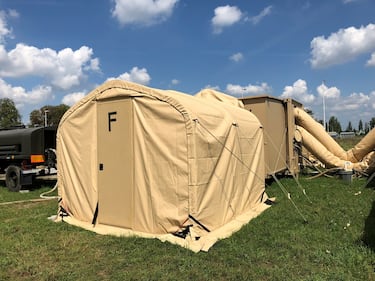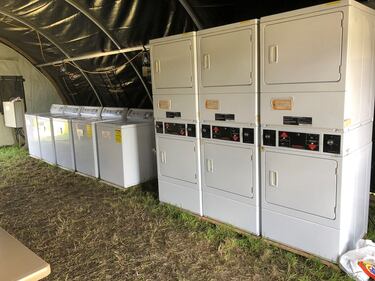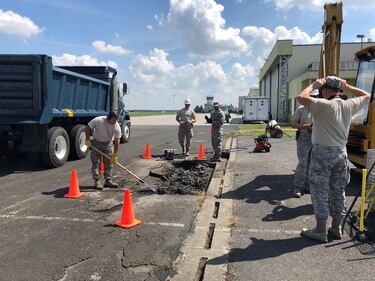WASHINGTON — Due to poor planning and a lack of centralized management, it will take more time than originally expected for the U.S. Air Force to procure “base in a box” kits and forward deploy them in Europe, the Defense Department’s inspector general found in an investigation.
The Air Force began buying Deployable Air Base System—Facilities, Equipment, and Vehicles Kits — known more simply as DABS kits — in fiscal 2016 as it sought to push back on Russian influence in Europe.
The idea was that the service could invest in packages of vehicles, temporary housing equipment, airfield construction materials and other supplies, place them around Europe at bases owned by U.S. allies and partners, and then stand up air operations if needed during a contingency.
RELATED
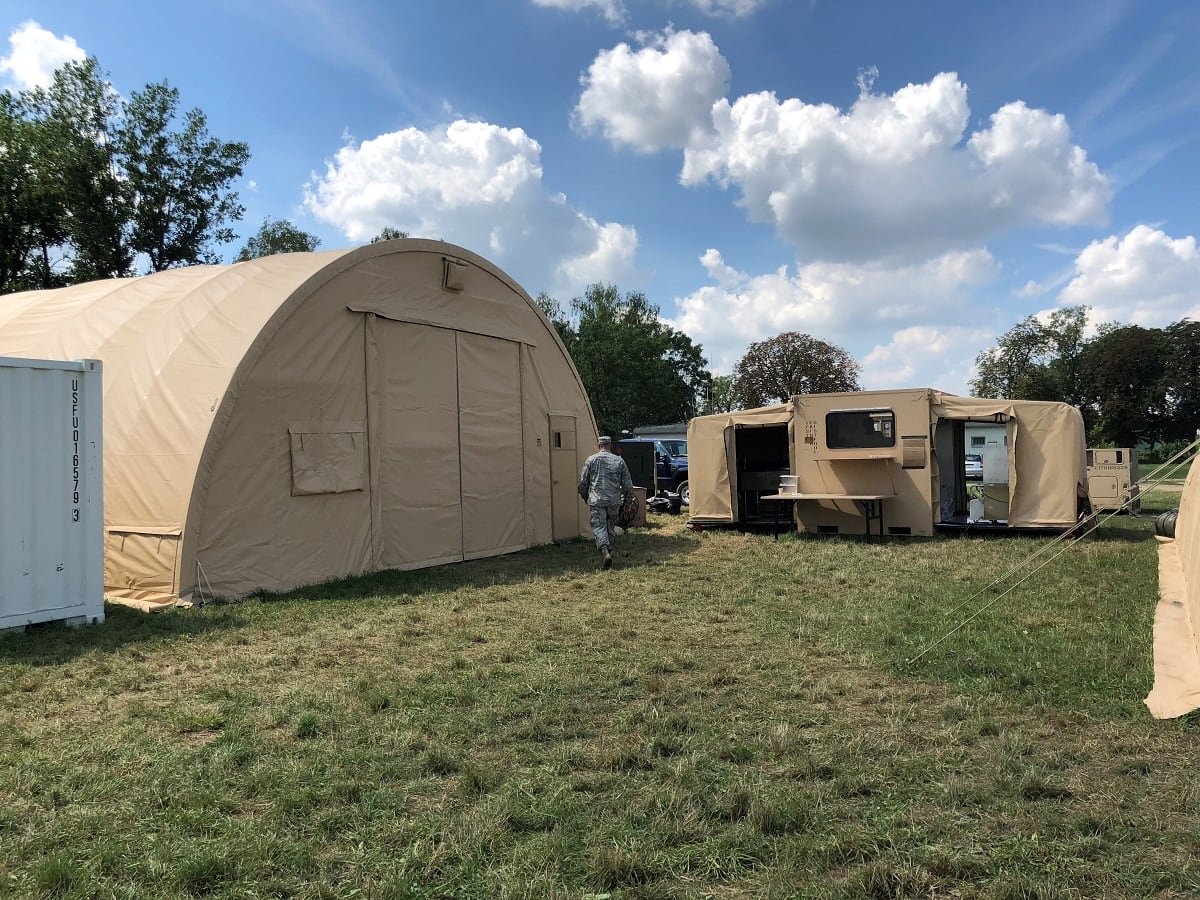
But even though the Air Force has invested hundreds of millions of dollars on DABS kits, U.S. Air Forces Europe (USAFE) is already behind on several key milestones, said the IG report, which was released Dec. 27.
“As a result, USEUCOM and USAFE will have fewer options for airlift capabilities when rapidly responding to a contingency within the USEUCOM area of responsibility,” it said — meaning that the Air Force may not have the resources it needs to rapidly deploy to Europe in the face of an unexpected conflict.
Part of the problem, the report stated, is that there was no unified master schedule, nor a program manager to coordinate among the various organizations involved in the program — which includes not only USAFE, but also the Air Force Life Cycle Management Center, Air Force Medical Operations Agency, Air Force Security Forces Center and others — and oversee the implementation of the DABS construct.
For instance, the overall plan indicated that the first storage facility would be constructed by FY19, but that date only took into account the levels of estimated funding available — not the timeline it takes to procure or construct items. The first storage facility won’t actually be ready until FY22, according to the construction schedule.
The 10 planned DABS storage facilities won’t be built until at least FY25, according to the individual construction schedules — a growth of two years from the overall schedule, which estimated completion of those facilities in FY23.
RELATED
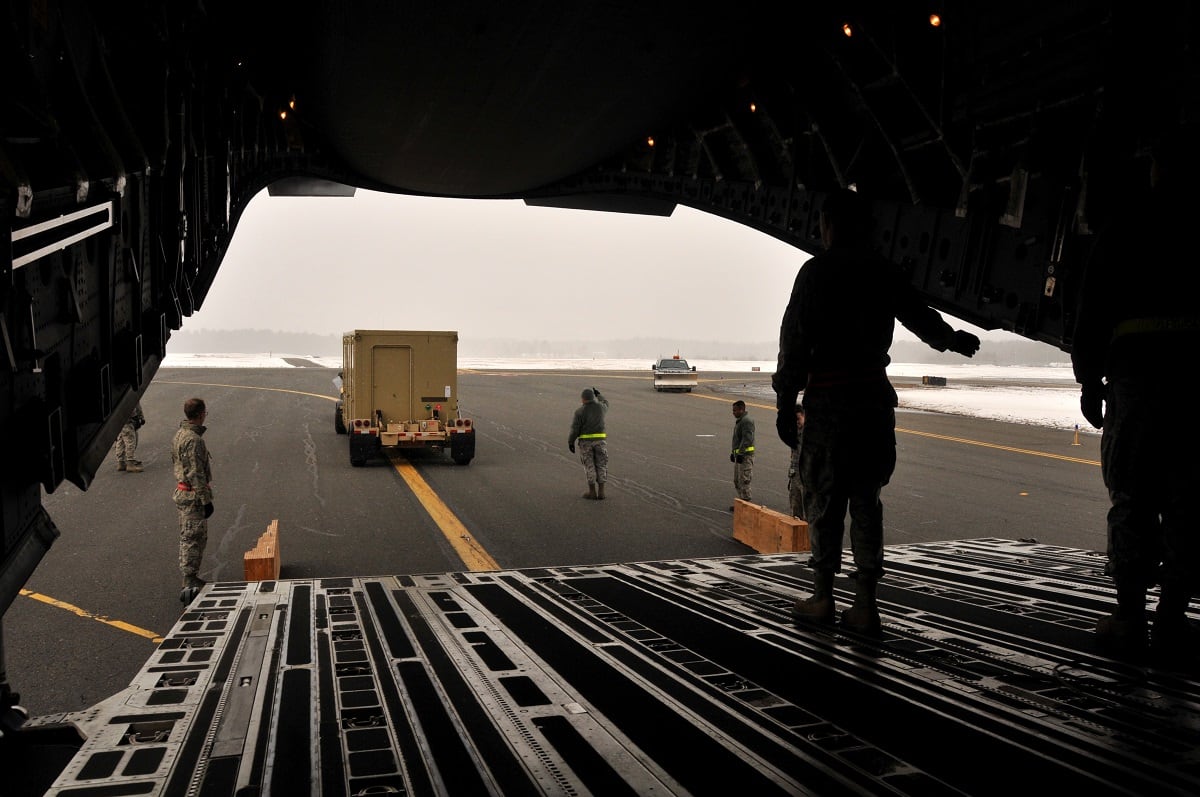
Similarly, the overall plan showed that the first five DABS kits would be procured by FY18, but officials don’t expect to have the supplies to make up a complete DABS system until at least FY20. Furthermore, the procurement of 24 complete DABS kits seems to be delayed about two years, until at least FY26.
“The program, authorized for $797 million in FYs 2018 and 2019, involves multiple organizations that are responsible for construction, management, and procurement; however, without a designated program manager responsible for periodically updating the overall plan, [U.S. European Command] and USAFE will not know when each of the 24 Deployable Air Base Kits will be available,” the IG report stated.
“Moreover, while one of the individual construction plans indicated the number of kits to be pre‑positioned at each of the 10 proposed storage locations, the overall plan did not.”
Image 0 of 10
How could such a big program move forward without a project manager at the helm?
The IG report surmises that the Air Force headquarters A4 office — the part of the Air Staff, located at the Pentagon, that oversees logistics — did not properly coordinate with USAFE’s own A4 organization, which owns the requirement.
RELATED
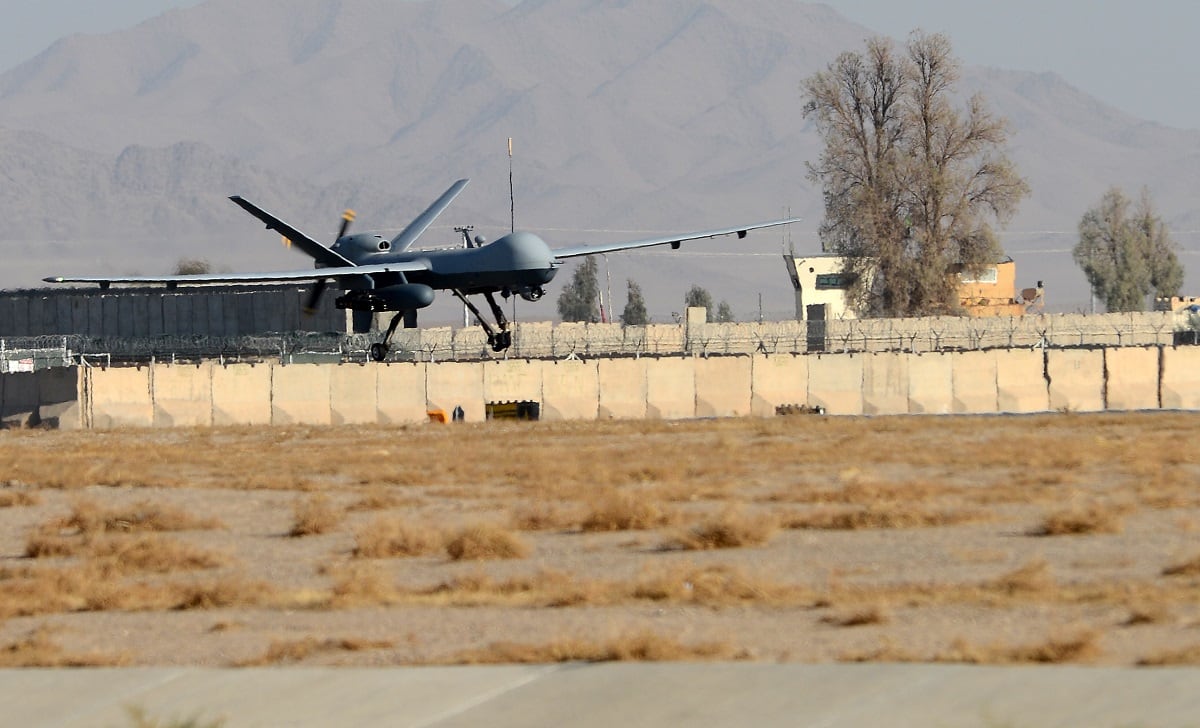
In its response to the IG’s report, the Air Force agreed on the need for a program manager for DABS during a meeting between USAFE leadership and other stakeholders, but so far a program manager has not been named.
Discussion over which part of the service should have authority over DABS is set to pick back up in a February meeting, and the service has also agreed to lay out a memo stipulating the roles and responsibilities of all stakeholders in the DABS program.
The IG also found that U.S. European Command did not tell USAFE when it needed to have all DABS kits procured, throwing uncertainty into the schedule.
In response, the command provided a classified implementation plan to the IG that laid out that information, with the Air Force specifying a new interim goal of pre-positioning 10 kits by 2021.
Defense News visited Poland in July to see the first trial of a DABS prototype in action. The exercise involved about 60 airmen who deployed to Poland’s 31st Air Base near Krzesiny and set up housing, conducted minor repairs to airfields, and set up the needed security and communications presence necessary to support a fighter squadron.
"The scale doesn’t need to be huge yet because right now what we’re doing is we’re scripting the process for how we would actually forward deploy DABS,” Capt. Alex John, who helped plan the exercise, said in a July interview. “What we’re able to do at a small scale, we’re able to do essentially the same exact way on a large scale. So it’s the same process, just more people and more equipment.”
Brig. Gen. Roy Agustin, U.S. Air Forces Europe’s director of logistics, engineering and force protection, told Defense News at the time that a future test deployment could involve bringing in a fighter squadron and evaluating whether DABS is truly able to support flying operations.
“As we get more of these equipment delivered," Agustin said, "I think we definitely want to see if we can deploy and employ a greater part of this capability.”
Valerie Insinna is Defense News' air warfare reporter. She previously worked the Navy/congressional beats for Defense Daily, which followed almost three years as a staff writer for National Defense Magazine. Prior to that, she worked as an editorial assistant for the Tokyo Shimbun’s Washington bureau.




